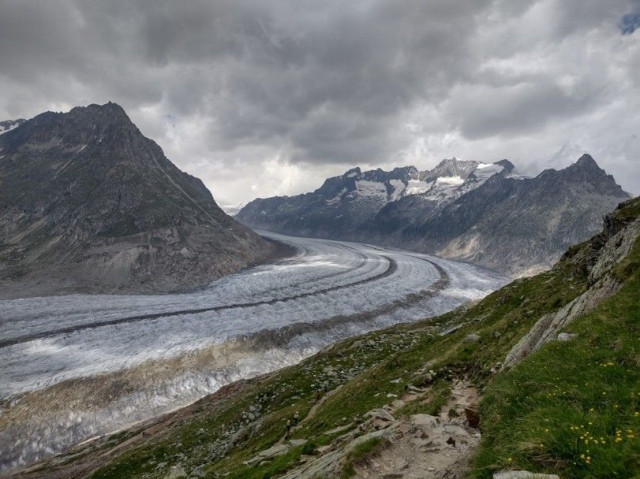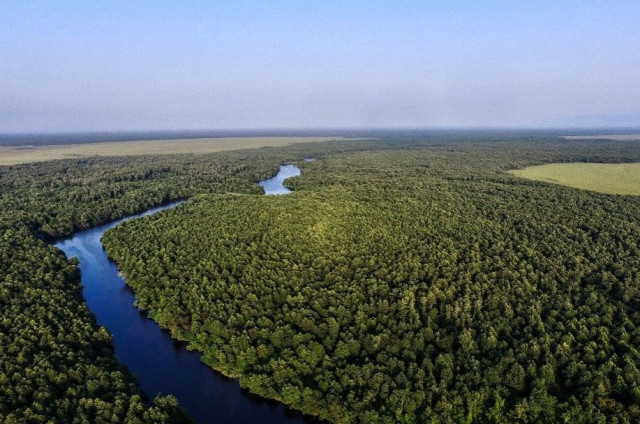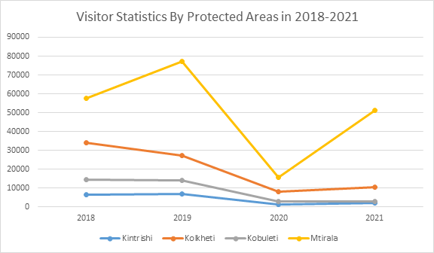Tourism in Protected Areas – UNESCO World Heritage Areas in Switzerland and Georgia
Written by Ana Chartolani, Zoe Gyr & Danja Suremann, a collaboration between students of the Tbilisi State University and the University of Zurich
In 1871, Europe's first mountain railway was built from Vitznau to Rigi in Switzerland (Gyr 2010). Travelling became easier and affordable for more people than ever. However, in our opinion, this has led to problems, such as mass tourism, dirty places, and increasing prices, in some regions. And with that, displacement of locals. Through the Internet and social media even secret spots have become famous. Is that worth it in our beautiful world?
For this reason, an initiative was launched by the UNESCO in 1972. The World Heritage Convention is a legally binding instrument which provides identification and conservation of the world's most outstanding natural and cultural landscapes. Meanwhile, the list of the UNESCO World Heritage counts 1154 properties, of which four are in Georgia and 13 in Switzerland. (UNESCO World Heritage Centre 1992-2022a)
One of those sites is the Jungfrau-Aletsch region in the Swiss Alps. The Natural World Heritage Site in Jungfrau-Aletsch crosses the territory of 26 different communes and covers an area of 824 km2 (Wallner et al. 2008:472). More than 40% of the area is covered by 167 different glaciers (Achermann & Liechti 2012:1). There are three criteria according to which the Jungfrau-Aletsch region was added to the list of Natural World Heritage Sites. One criterion is the beauty of the mountainous landscape and the important role it played in cultural history and tourism. Another is the fact that the region is a good example for the alpine orogeny and many geomorphic features can be observed there. It can even be useful to understand processes of the last glacial maximum. The last criterion is that it covers many different alpine or subalpine habitats. Among other benefits, these habitats are useful to observe processes of climate change (UNESCO-Welterbe Swiss Alps Jungfrau-Aletsch Managementzentrum 2022).
In Georgia, the history of UNESCO and other protected areas is not as long as in Switzerland. It's the first time in Georgia's history, that four protected areas preserving "Colchic wetlands and rainforests" have joined the likes of Yellowstone National Park and Swiss Alps. The Mtirala and Kolkheti National Parks, as well as the Kintrishi and Kobuleti Protected Areas will be listed alongside the just over 210 natural spots from across the world that have received the status from UNESCO. Safeguarded by the Agency of Protected Areas of Georgia, the territorial formations have been formed between 1959-2007 (Agenda 2021).The Colchic Rainforests and Wetlands are relict forests which have survived the glacial cycles of the Ice-age. The extremely humid, nemoral and broad-leaved rainforests comprise a highly diverse flora and fauna, with very high densities of endemic and relict species. This is the result of millions of years of uninterrupted evolution and speciation processes within the Colchic Pliocene refugium. These unique ecosystems are quite popular among domestic as well as international tourists. (UNESCO World Heritage Centre 1992-2022b)
With that, one can see that protected areas are very important to preserve our wonderful landscapes. The UNESCO World Heritage and many other organizations do great work. However, we think that all of us should take care of our home planet.
References:
Achermann, Sarah & Liechti, Karina (2012): Die Gletscher des Welterbes Jungfrau-Aletsch im Spiegel der Zeit. Gletscher, Das UNESCO-Welterbe Schweizer Alpen Jungfrau-Aletsch, 2012, 1.
Agency of Protected Areas (2022): Statistical data of visitors, URL: <http://apa.gov.ge/en/statistika/vizitorta-statistika> (state: n.d.; access: 19.11.2022).
Agenda (2021): Western Georgian rainforests, wetlands join UNESCO World Heritage List, URL: <https://agenda.ge/en/news/2021/2111> (state: 26.07.2021; access: 19.11.2022)
Gyr, Ueli (2010): The History of Tourism: Structures on the Path to Modernity, European History Online, 2010, 1-18.
UNESCO World Heritage Centre (1992-2022a): General Policies Regarding the World Heritage Convention, URL: <https://whc.unesco.org/en/compendium/?action=theme&id_theme=1> (state: n.d.; access: 10.11.2022).
UNESCO World Heritage Centre (1992-2022b): Colchic Rainforests and Wetlands, URL: <https://whc.unesco.org/en/list/1616/> (state: n.d.; access: 19.11.2022)
UNESCO-Welterbe Swiss Alps Jungfrau-Aletsch Managementzentrum (2022): Aufnahmekriterien, URL: <https://jungfraualetsch.ch/welterbe/welterbe-gebiet/> (state: n.d.; access: 14.11.2022).
Wallner, Astrid; Rist, Stephan; Liechti, Karina & Wiesmann, Urs (2008): Protection: A Means for Sustainable Development? The Case of the Jungfrau-Aletsch-Bietschhorn World Heritage Site in Switzerland.
Related Posts
Comments
By accepting you will be accessing a service provided by a third-party external to https://www.mountainapp.net/
This website uses no external trackers, no analytics, just session cookies and values your online privacy.





